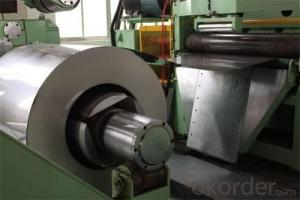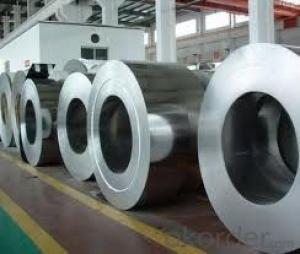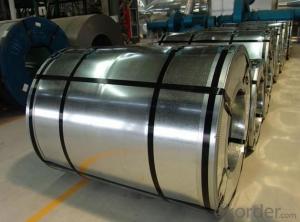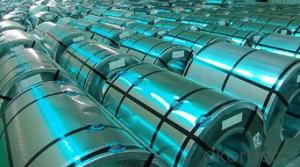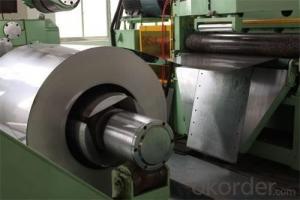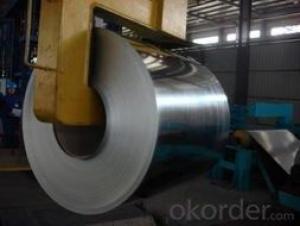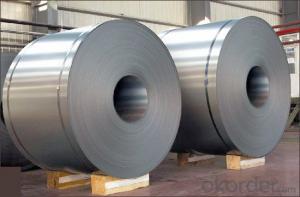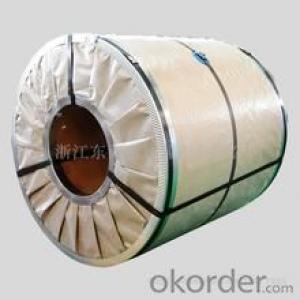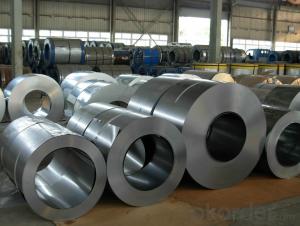Chinese Best Cold Rolled Steel Coil JIS G 3302--High Strength
- Loading Port:
- China main port
- Payment Terms:
- TT OR LC
- Min Order Qty:
- 50 m.t.
- Supply Capability:
- 10000 m.t./month
OKorder Service Pledge
OKorder Financial Service
You Might Also Like
Chinese Best Cold Rolled Steel Coil JIS G 3302--High Strength
1.Structure of Cold Rolled Steel Description:
The raw material of cold rolled steel coil/sheet is high quality hot rolled product, and after pickling continuous rolling, degreasing, annealing,skin pass,slitting and cut to length line etc. Along with it many kinds of new technology and new process of global cold rolling production have been applied. .
2.Main Features of the Cold Rolled Steel:
• Excellent process capability
• Workability, durability
• Excellent heat resistance performance
• High strength
• Good visual effect
3. Cold Rolled Steel Images
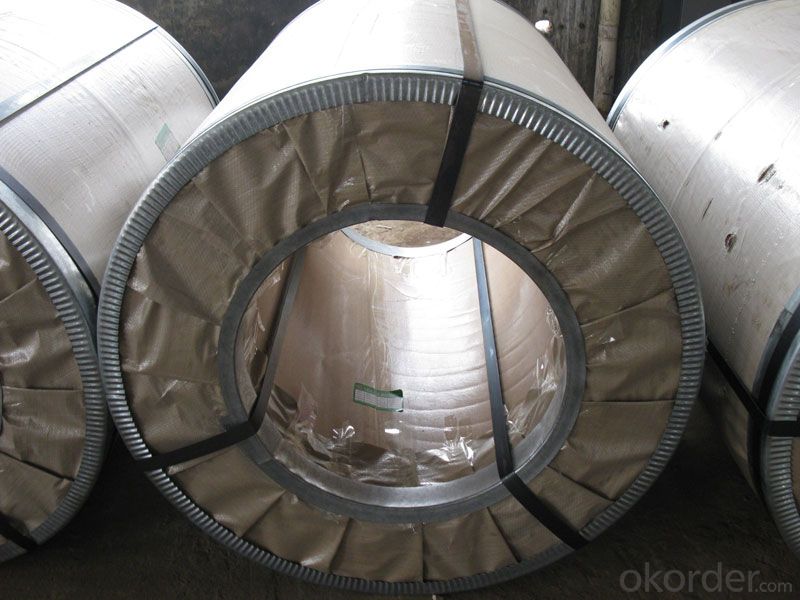
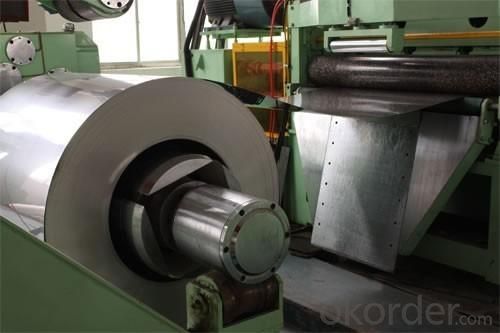
4.Cold Rolled Steel Specification
Standard:AISI,ASTM,DIN,GB,JIS,JIS G3302 ASTM 653M EN10142
Grade: Q195~Q345
Thickness: 0.16mm~2.0mm
Width: 1250mm MAX
Coil weight:3-12 MT
Coil ID:508/610mm
5. FAQ of Cold Rolled Steel
1.How to guarantee the quality of the products?
We established the international advanced quality management system,every link from raw material to final product we have strict quality test;We resolutely put an end to unqualified products flowing into the market. At the same time, we will provide necessary follow-up service assurance.
2. How long can we receive the product after purchase?
Usually within thirty working days after receiving buyer’s advance payment or LC. We will arrange the factory manufacturing as soon as possible. The cargo readiness usually takes 15-25 days, but the shipment will depend on the vessel situation.
- Q: i cant find this stuff about steel:conductivitystrengthcorrosion resistancecommon applicationsif you know of any interesting facts, i could use those 2!thanx!
- The strength and corrosion resistance depends on the mix. Pure steel is pure iron plus 6% pure carbon. It is the carbon molecules that give it a tough crystallized strength. Pure iron is wrought iron and you can bend that with your hands. Strength also depends on the shape of the beam the most common steel beam is the W flange more commonly called the I beam. That is because the strength of the ‘I’ beam is just a little bit less than if the entire I beam was filled in; however the weight and material savings is huge. Steel itself has no corrosion resistance and is often given a zinc coating just to resist oxidization. Manganese, vanadium and tungsten are just some of the other elements added to improve the steel.
- Q: Ik iron was too heavy but could steel bolts have been used. I can see iron dissolving at surface when to be a danger it needs to reach the core of sun.. But so does steel go deeper in(w.e alloy turned from iron)..I wanna know which would be worse iron..or upgraded iron(steel) and if the steel would have worse effects than normal iron..Im sure if we used iron we used steel
- Reach the core of the sun? No material can even get past the corona of the sun, where did you hear Ulysses went to the core? The spacecraft Ulysses orbits the sun at about 5 au. that's 5 times the earths orbit.. Steel is used instead of Iron because steel is much stronger and therefore you can use smaller 'bolts' to accomplish the same thing, reducing the weight. As far as most structures are concerned steel is better than plain Iron in every category. So Iron is worse i guess.
- Q: How are steel coils used in the production of pipelines?
- Steel coils are used in the production of pipelines as they are rolled into flat sheets and then formed into the required shape. These coils provide the necessary strength and durability for the pipelines, ensuring they can withstand the high pressure and harsh conditions they will be exposed to.
- Q: How are steel coils processed for slitting or shearing?
- Steel coils are processed for slitting or shearing by feeding the coil through a slitter or shear machine, which cuts the coil into narrower strips or various shapes, respectively. This process involves unwinding the coil, straightening it, and then passing it through the slitting or shearing machine, where precise cuts are made according to the desired dimensions. The resulting strips or shapes are then collected and packaged for further use or distribution.
- Q: What are the different types of coil slitting machines?
- There are several different types of coil slitting machines available in the market, each designed to meet specific requirements and preferences. Some of the common types include: 1. Rotary shear slitters: These machines use rotary knives mounted on a rotating drum to cut the coil into narrow strips. They are ideal for high-speed operations and can handle large volumes of material. 2. Loop slitters: Loop slitting machines feed the coil through a loop to maintain tension and prevent material damage during the slitting process. They are suitable for delicate materials or those prone to deformation. 3. Turret slitters: Turret slitting machines have multiple sets of slitting knives mounted on a rotating turret. This allows for quick and easy changeover between different slitting configurations, reducing downtime and increasing productivity. 4. Drag slitters: Drag slitting machines use a stationary knife and a moving clamp to hold and pull the coil through the cutting process. They are versatile and can handle a wide range of materials, including thick or heavy coils. 5. Crush slitters: Crush slitting machines use a set of opposing rollers to crush and cut the coil material. They are commonly used for softer materials or those that are difficult to cut with traditional knives. 6. Laser slitters: Laser slitting machines use a high-powered laser beam to precisely cut through the coil material. They offer unmatched accuracy and are suitable for high-end applications or materials with complex shapes. Each type of coil slitting machine has its own advantages and limitations. The choice of machine depends on factors such as the type of material, required speed, desired accuracy, and production volume.
- Q: How are steel coils used in the manufacturing of storage racks?
- Steel coils are used in the manufacturing of storage racks by being cut into smaller, more manageable pieces that are then shaped and welded into the desired rack structure. The strength and durability of the steel coils make them an ideal material for supporting heavy loads and ensuring the stability of the storage racks.
- Q: What are the common methods of testing the strength of steel coils?
- Common methods of testing the strength of steel coils include tensile testing, hardness testing, and bend testing. Tensile testing involves subjecting the steel coil to tension until it reaches its breaking point. This test measures the maximum amount of force the coil can withstand before it fractures. It provides valuable information about the tensile strength, yield strength, and elongation properties of the steel. Hardness testing is another common method used to determine the strength of steel coils. It measures the resistance of the steel to indentation or scratching. Various methods, such as Rockwell, Brinell, or Vickers tests, are employed to measure the hardness of the steel. Hardness testing provides information about the material's ability to resist deformation or wear. Bend testing is performed to evaluate the ductility and flexibility of the steel coil. In this test, the coil is bent to a specific angle and inspected for signs of cracking or fracturing. Bend testing helps determine the material's ability to withstand bending or forming processes without failure. Other methods of testing the strength of steel coils may include impact testing, where a controlled impact is applied to the coil to assess its resistance to sudden loading conditions, and fatigue testing, which involves subjecting the coil to cyclic loading to determine its endurance limit and potential for failure under repeated stress. It is important to note that the specific testing methods employed may vary depending on the intended application and industry standards. Additionally, non-destructive testing techniques, such as ultrasonic testing or magnetic particle inspection, can be used to detect internal defects or flaws in steel coils without causing damage to the material.
- Q: My uncle got me some new 'Nam style jungle boots at the px at Fort Worth JSB, and he told me that back in Vietnam, they used to issue guys steel sole boots, that had a sole reinforced with a steel plate, as punji stick d-fence. Is this true, it sounds logical, but I can't figure out how a steel plate in the sole would work. My uncle is kind of a BS'er, plus he wasn't even in Vietnam, much less the Infantry, much less combat, but he was in USAF at the time.
- This Site Might Help You. RE: Steel sole combat boots? My uncle got me some new 'Nam style jungle boots at the px at Fort Worth JSB, and he told me that back in Vietnam, they used to issue guys steel sole boots, that had a sole reinforced with a steel plate, as punji stick d-fence. Is this true, it sounds logical, but I can't figure out how a...
- Q: Having a new kitchen and would like to know the pros and cons of stainless steel as opposed to white appliances. I can only think of finger marks on the SS, which I believe are difficult to remove. Anyone had both that they could advise please?
- Like others said about Stainless Steel, plus if bleach accidentally touched it, it will leave a permanent scar, Stainless Steel can be cleaned with water and soap then with baby oil. White will be better.
- Q: How are steel coils used in the production of storage tanks and silos?
- Due to their strength and durability, steel coils are essential in the production of storage tanks and silos. Typically made from high-quality steel, these coils undergo various manufacturing techniques to achieve the desired thickness and shape. In the production process, the steel coils are initially uncoiled and then cut into specific sizes and lengths to meet the requirements of the storage tank or silo design. Bending and rolling machines are then used to shape the coils into cylindrical sections, forming the main body of the tank or silo. After achieving the desired shape, the coils are welded together to create a continuous and secure seam. This welding process ensures leak-proof tanks and silos that can withstand the pressure exerted by the stored materials. Furthermore, steel coils play a crucial role in reinforcing the structure of storage tanks and silos. They are frequently utilized to construct the roofs, bottoms, and other structural components of these storage units. The strength and resilience of steel make it ideal for supporting the weight of the stored materials and resisting external forces. Additionally, steel coils can be coated or treated with protective materials to enhance their resistance to corrosion and extend their lifespan. This is particularly important for storage tanks and silos that store corrosive substances or are exposed to harsh environmental conditions. In conclusion, steel coils are a fundamental element in the production of storage tanks and silos, providing the necessary strength, durability, and structural integrity required for these storage units.
Send your message to us
Chinese Best Cold Rolled Steel Coil JIS G 3302--High Strength
- Loading Port:
- China main port
- Payment Terms:
- TT OR LC
- Min Order Qty:
- 50 m.t.
- Supply Capability:
- 10000 m.t./month
OKorder Service Pledge
OKorder Financial Service
Similar products
Hot products
Hot Searches
Related keywords
